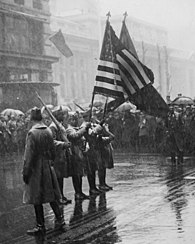
Victorio was a warrior and chief of the Warm Springs band of the Tchihendeh division of the central Apaches in what is now the American states of Texas, New Mexico, Arizona, and the Mexican states of Sonora and Chihuahua.

Aragon is a census-designated place on the Tularosa River in Catron County, New Mexico, United States. As of the 2010 census it had a population of 94. It is located 7 miles (11 km) northeast of Apache Creek.

The Apache Wars were a series of armed conflicts between the United States Army and various Apache tribal confederations fought in the southwest between 1849 and 1886, though minor hostilities continued until as late as 1924. After the Mexican–American War in 1846, the United States annexed conflicted territory from Mexico which was the home of both settlers and Apache tribes. Conflicts continued as American settlers came into traditional Apache lands to raise livestock and crops and to mine minerals.
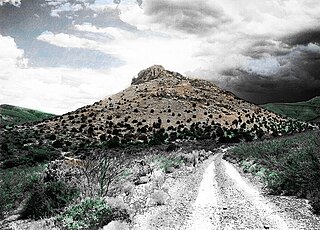
Victorio Peak is a high rocky outcropping in the Hembrillo Basin in southern New Mexico. This was one of Chief Victorio's hideouts, and was the site of a battle in 1880 between Victorio's Apaches and the U.S. Army Ninth Cavalry "Buffalo Soldiers." Additionally, an American gold prospector claimed to have found hidden treasure inside the Mountains in the late 1930s.

Henry Johnson was a Buffalo Soldier in the United States Army and a recipient of America's highest military decoration – the Medal of Honor – for his actions in the Indian Wars of the western United States.
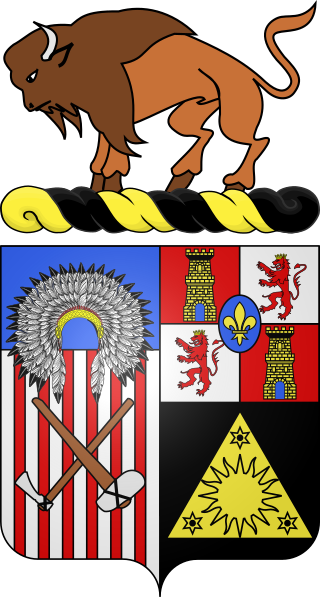
The 10th Cavalry Regiment is a unit of the United States Army. Formed as a segregated African-American unit, the 10th Cavalry was one of the original "Buffalo Soldier" regiments in the post–Civil War Regular Army. It served in combat during the Indian Wars in the western United States, the Spanish–American War in Cuba, Philippine–American War and Mexican Revolution. The regiment was trained as a combat unit but later relegated to non-combat duty and served in that capacity in World War II until its deactivation in 1944.
Thomas Boyne was a Buffalo Soldier in the United States Army and a recipient of America's highest military decoration—the Medal of Honor—for his actions in the Indian Wars of the western United States.

George Jordan was a Buffalo Soldier in the United States Army and a recipient of America's highest military decoration—the Medal of Honor—for his actions in the Indian Wars of the western United States.
Emanuel Stance, also known as Edmund Stance, was a Buffalo Soldier in the United States Army and a recipient of America's highest military decoration—the Medal of Honor—for his actions in the Indian Wars of the western United States.
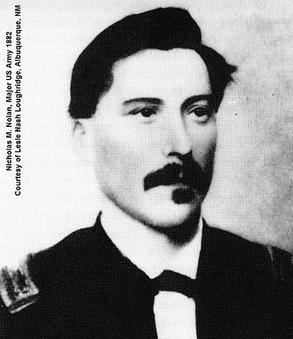
Nicholas Merritt Nolan was a United States Army major. An Irish immigrant, he began his military career in New York on December 9, 1852, with the 4th Artillery, and subsequently served in New York's 2nd Dragoons. He enlisted as a private and rose through the ranks becoming a first sergeant. He was commissioned an officer in late 1862 in the Regular Army, while serving with the 6th U.S. Cavalry Regiment during the American Civil War. He participated in 16 campaigns with the 6th and most of its battles. He was slightly wounded at the Battle of Fairfield and seriously wounded at the Battle of Dinwiddie Court House. He was brevetted twice and noted at least twice for gallantry during combat. He was slightly wounded when captured at the end of March 1865, and was later paroled. After the Civil War, he served with the 10th U.S. Cavalry, known as the Buffalo Soldiers, for 14 years. Nolan is also noted for his pluses and minuses during the Buffalo Soldier tragedy of 1877 that made headlines in the Eastern United States. He was the commanding officer of Henry O. Flipper in 1878, the first African American to graduate from the United States Military Academy at West Point. He commanded several frontier forts before his untimely death in 1883.

The Battle of Carrizo Canyon was one of seven battles between Nana's band of Apache warriors and United States Cavalry troops in New Mexico Territory. After the death of Victorio in 1880, Nana took over leadership of the band. Other Apaches joined this old warrior's group. On August 12, 1881, Capt. Charles Parker with 18 10th Cavalry Buffalo Soldiers were following Nana's warriors when they were ambushed in Carrizo Canyon.
Edwin L. Elwood was an American soldier in the U.S. Army who served with the 8th U.S. Cavalry during the Indian Wars. He took part in campaigns against Cochise and the Apache Indians in the Arizona Territory in the late-1860s and was one of thirty-two men who received the Medal of Honor for gallantry during the fighting in the Chiricahua Mountains, known as the "Campaign of the Rocky Mesa", on October 20, 1869.
Francis Oliver was an American soldier in the U.S. Army who served with the 1st U.S. Cavalry during the Indian Wars. He was one of thirty-two men received the Medal of Honor for gallantry against the Apache Indians in the Chiricahua Mountains, later known as the "Campaign of the Rocky Mesa", on October 20, 1869.
Sergeant Frederick Jarvis was an American soldier in the United States Army who served with the 1st U.S. Cavalry regiment during the Apache Wars. He was one of thirty-two men received the Medal of Honor for gallantry fighting Cochise and the Apache Indians in the Chiricahua Mountains of Arizona, known as the "Campaign of the Rocky Mesa", on October 20, 1869.
Private John Tracy, born Henry G. Nabers, was an Irish-born soldier in the U.S. Army who served with the 8th U.S. Cavalry during the Apache Wars. He was one of thirty-two men received the Medal of Honor for gallantry in fighting Cochise and the Apache Indians in the Chiricahua Mountains of Arizona, later known as the "Campaign of the Rocky Mesa", on October 20, 1869.
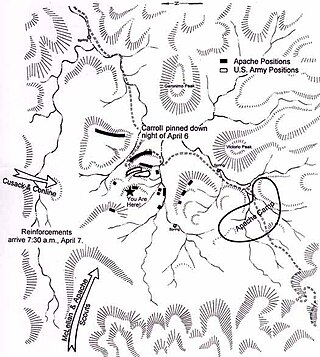
The Battle of Hembrillo Basin was fought April 5–8, 1880 between the United States Army against a combined band of Chiricahua and Mescalero Apaches led by Chief Victorio. Hembrillo Basin was the largest battle of Victorio's War, although casualties were light on both sides. Victorio held off an attack by superior numbers of army soldiers and Indian scouts, evacuated his women and children from the battlefield, and withdrew successfully. Hembrillo Basin is located on the White Sands Missile Range and access by the public is strictly regulated.
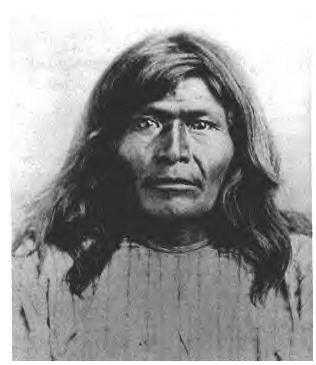
Victorio's War, or the Victorio Campaign, was an armed conflict between the Apache followers of Chief Victorio, the United States, and Mexico beginning in September 1879. Faced with arrest and forcible relocation from his homeland in New Mexico to San Carlos Indian Reservation in southeastern Arizona, Victorio led a guerrilla war across southern New Mexico, west Texas and northern Mexico. Victorio fought many battles and skirmishes with the United States Army and raided several settlements until the Mexican Army killed him and most of his warriors in October 1880 in the Battle of Tres Castillos. After Victorio's death, his lieutenant Nana led a raid in 1881.
Private Christian Steiner was a German-born American soldier in the U.S. Army who served as a saddler with the 8th U.S. Cavalry during the Apache Wars in the Arizona Territory. He was one of thirty-two men awarded the Medal of Honor for gallantry battling against Cochise and the Apache Indians in the Chiricahua Mountains on October 20, 1869.
Sergeant John P. Schnitzer was an American soldier and wagoner in the U.S. Army who served with both the 23rd U.S. Infantry and 6th U.S. Cavalry in the New Mexico Territory during the Apache Wars. He was awarded the Medal of Honor, along with First Lieutenant Wilber Wilder, for rescuing a fellow soldier under heavy fire while fighting the Apache at Horseshoe Canyon on April 23, 1882, which he received fourteen years later.
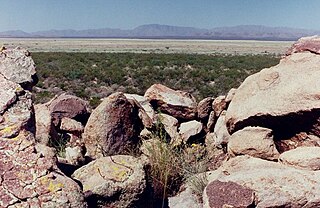
The Battle of Tres Castillos, October 14–15, 1880, in Chihuahua State, Mexico resulted in the death of the Chiricahua Apache chieftain Victorio and the death or capture of most of his followers. The battle ended Victorio's War, a 14-month long odyssey of fight and flight by the Apaches in southern New Mexico, western Texas, and Chihuahua. Mexican Colonel Joaquin Terrazas and 260 men surrounded the Apache and killed 62 men, including Victorio, and 16 women and children, and captured 68 women and children. Three Mexicans were killed. Victorio had little ammunition to resist the attack.














